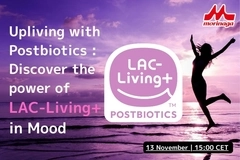Tasting study of nutritious mealworm-enriched foods reveals high consumer acceptance
Key takeaways
- Mealworm-enriched brownies formulated with protein hydrolysate achieved very high consumer acceptance due to improved texture and a better nutritional profile.
- The study confirms that the form of insect protein is key, finding that hydrolysates are more effective than simple flour for creating attractive, accepted products.
- Mealworms are a nutritious and sustainable protein source, comparable to meat or eggs and rich in healthy fats, minerals, and vitamins, with a lower environmental impact.
A recent study investigated the nutritional consumption of pasteurized dairy products and brownies enriched with flour made from mealworms (Tenebrio molitor). It is the first to offer a tasting of these products in the Mediterranean region to determine how well they are accepted in this cultural and culinary setting.
The research team highlights “very positive” results, particularly for the brownies. Mealworm hydrolysate improved their texture, making them softer and more elastic.
“This shows that, with the right formulation, products with insect protein can be attractive to consumers and have a place in our cuisine,” say the researchers.
In addition to significantly improving the texture of brownies, adding hydrolyzed mealworm protein produced a more balanced nutritional profile, with a better protein to lipid ratio, and was more acceptable to consumers.
For the enriched dairy products, the combination of hazelnut and vanilla flavors was most highly rated in the tasting, with an acceptability score of 52.4%.
“These results confirm that not all forms of insect protein have the same potential. The way in which they are incorporated into consumer products is key to achieving foods that, as well as being sustainable and nutritious, are liked by consumers,” explains lead researcher Marta Ros from Universitat Oberta de Catalunya (UOC), Spain.

Not all insect proteins created equal
The study in Food Science and Nutrition highlights that not all forms of insect protein have the same potential. Specifically, the researchers discovered that hydrolysates — obtained by the hydrolysis of animal proteins using enzymes or acids — effectively create attractive, functional products with a high degree of sensory acceptance.
Previous studies had already demonstrated that insect protein in the form of flour, not as a whole food, was clearly more acceptable to users, as it can be used in common food products.
The Mediterranean study worked with two product lines. The first versions were pasteurized dairy products enriched with T. molitor flour, flavored with hazelnut, vanilla, and both at the same time.
Secondly, the brownies were also made with three recipes: one with insect flour only, a second that added yogurt, and a third combining insect flour with hydrolysate.
To assess which of these formulations was most acceptable, two independent tasting tests were carried out. The dairy test involved 21 participants over 60 years of age, and the brownies test comprised 25 who were between 19 and 73.
 In addition to significantly improving the texture of brownies, adding hydrolyzed mealworm protein produced a more balanced nutritional profile, with a better protein to lipid ratio.Based on their positive findings, the UOC researchers are already working on a new trial to compare conventional biscuits with biscuits made with T. molitor flour eaten after physical exercise, to determine their effect on blood and anthropometric parameters.
In addition to significantly improving the texture of brownies, adding hydrolyzed mealworm protein produced a more balanced nutritional profile, with a better protein to lipid ratio.Based on their positive findings, the UOC researchers are already working on a new trial to compare conventional biscuits with biscuits made with T. molitor flour eaten after physical exercise, to determine their effect on blood and anthropometric parameters.
“This is not a fad, but a real and sustainable alternative. Insects can be a source of protein of high biological value with attractive gastronomic applications, and further research is needed in this regard,” says Ros.
Insects for food security
The mealworm is one of the insect species authorized for human consumption by the European Food Safety Agency and is among those most scientifically studied for its high-quality protein content.
T. molitor contains all the essential amino acids needed by the human body, it is comparable to traditional sources of protein such as meat and eggs.
Additionally, the researchers highlight that healthy fats in mealworms include polyunsaturated fatty acids such as omega-3 and omega-6 (essential for cardiovascular and brain health) and monounsaturated fats that can help lower cholesterol.
“It is also a good source of minerals such as iron, zinc, and calcium, as well as vitamins such as B12 and riboflavin (vitamin B2),” add the scientists.
“Mealworm production has a low environmental impact, clearly less than that of conventional sources of animal protein, generating fewer greenhouse gas emissions and using less water and land. Overall, this makes the species a sustainable and nutritious alternative in the context of the current climate crisis.”
In Europe, very few people eat insects, however, the practice is common in regions of Asia, Africa, and parts of America and Oceania.
Last month, Nutriearth inaugurated its first commercial manufacturing site for producing sustainable vitamin D3 from mealworms in France. The company’s patented, biomimetic technology exposes mealworm flour to a specific type of light that creates bioactive, highly absorbable vitamin D3, completely without chemical extraction, solvents, or additives.
Nutriearth launched its vitamin D-rich mealworm-based functional flour N-utra in Europe last December, shortly after obtaining EU novel food status.














